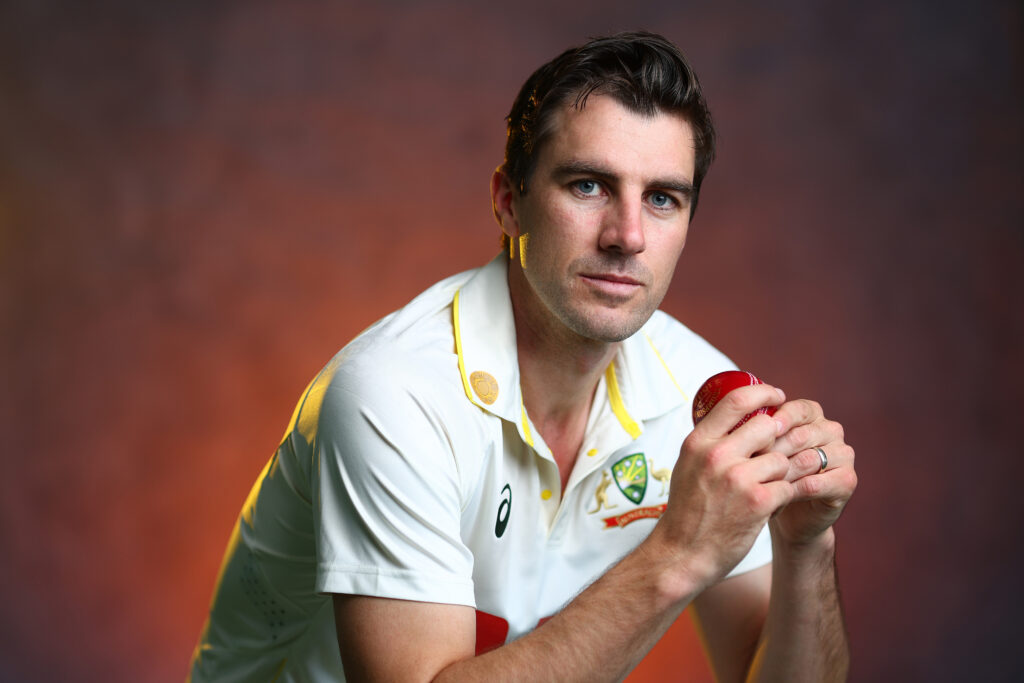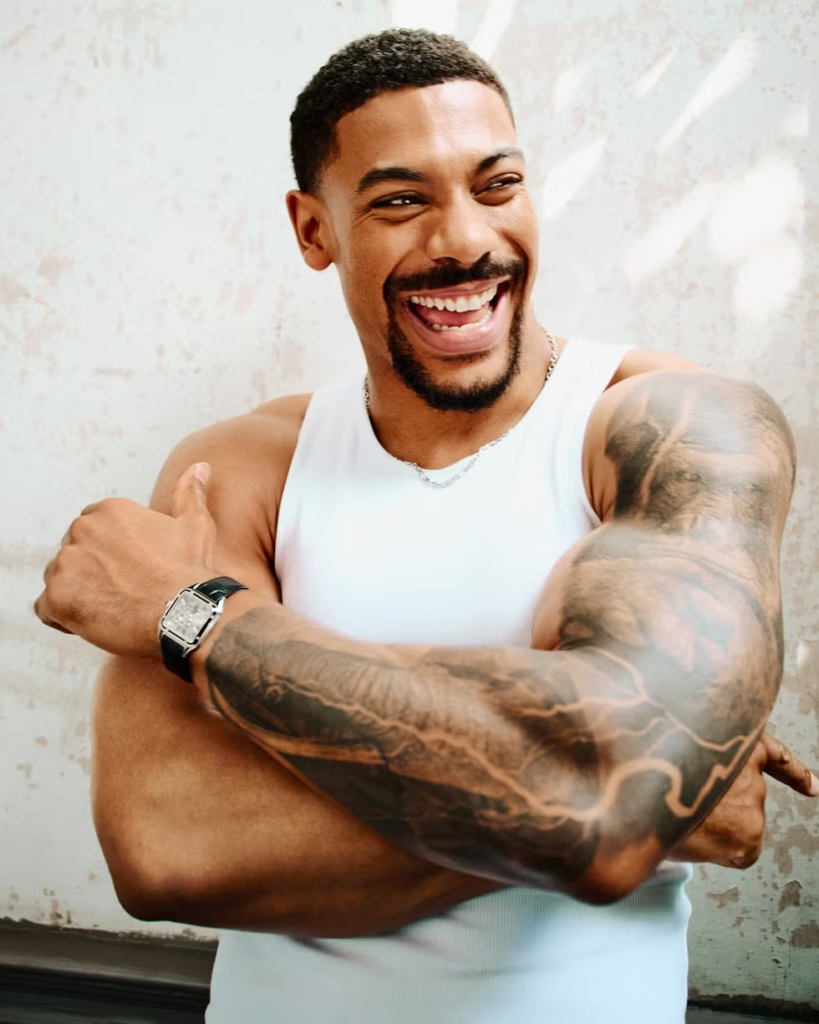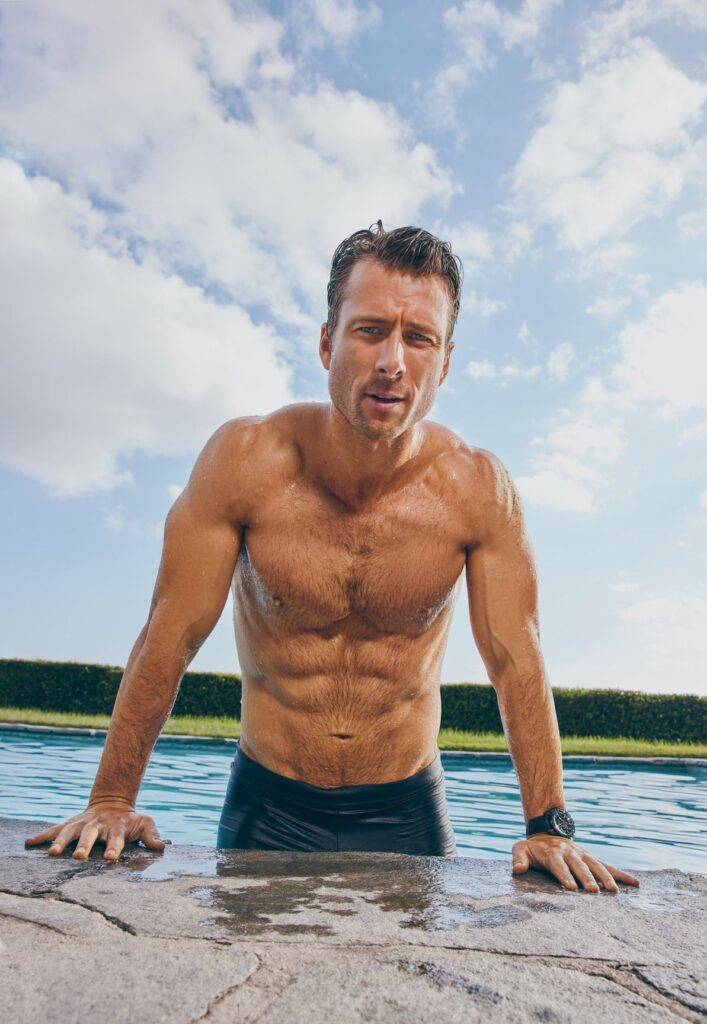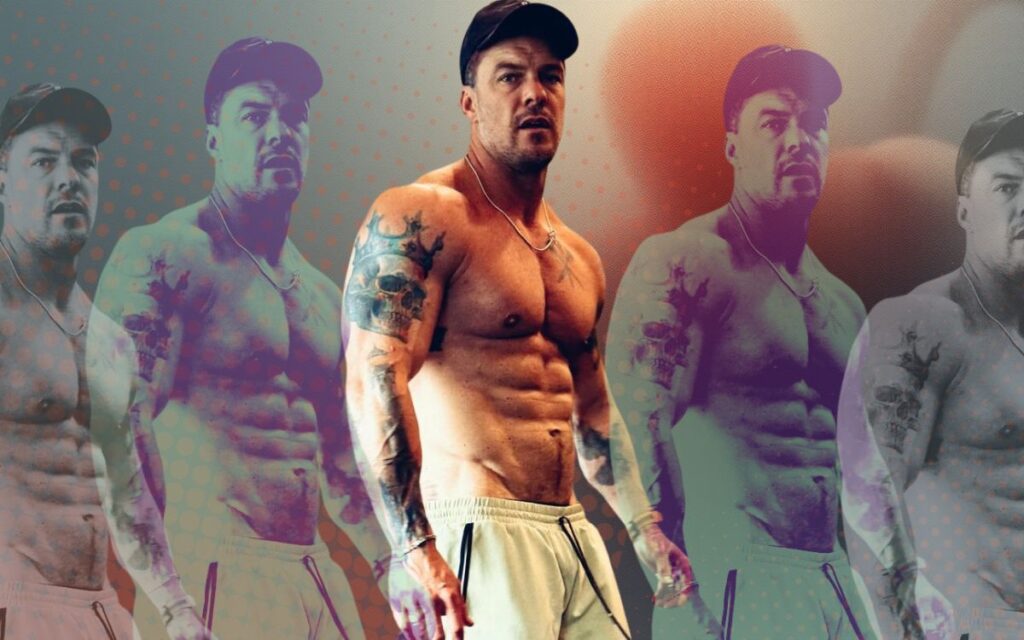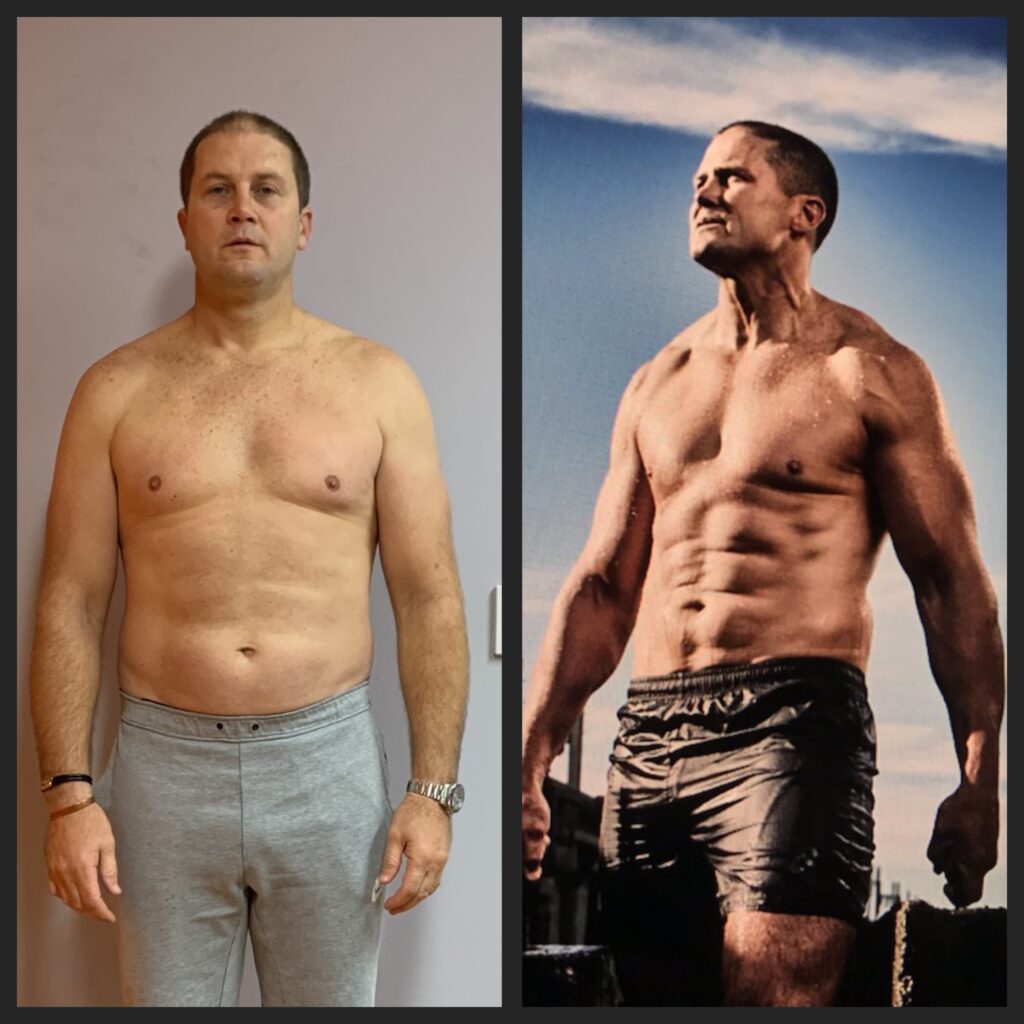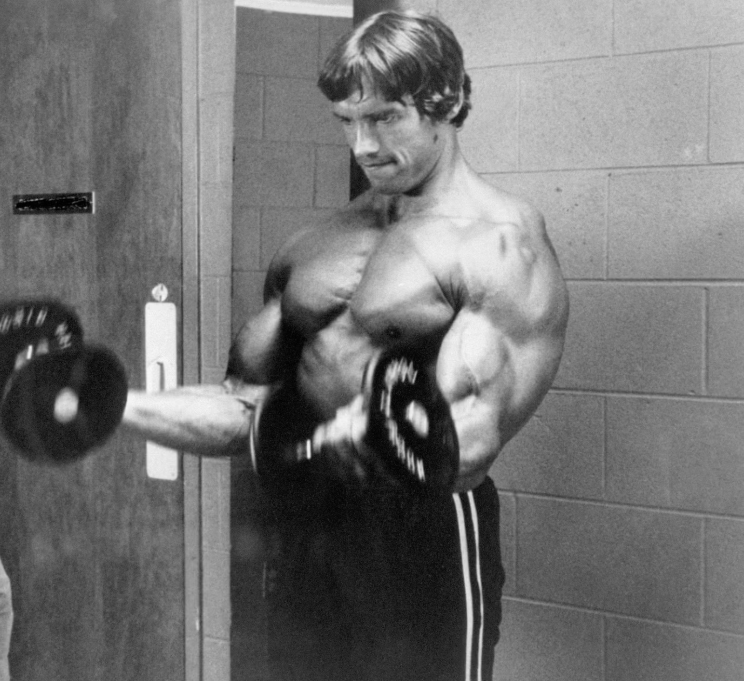If you’re looking to get inspired to smash your goals, it’s hard to find a better role model than Ross Edgley: The 36-year old Brit has pulled a car for a full marathon, dragged a tree through three stages of the “World’s Strongest Triathlon,” and swam the entire way around the island of Great Britain—covering 1,780 miles over 157 days. And he says you can probably do things in the gym and in sport that you can barely imagine, too.
“You are far more powerful than your own mind allows you to believe,” he says. “That’s not just kind of throwaway comment. It’s legit.”
That’s one reason why Edgley fills his books, including The World’s Fittest Book and The Art of Resilience with plenty of advice about endurance, strength, and pushing your (and his own) limits. He took a break to share his tips for overcoming mental hurdles to accomplish your goals, share how to create your own epic adventure, and provide a mouthwatering recipe for Biscoff protein cheesecake.
This interview has been condensed and edited for clarity.
You’ve said, “your most powerful weapon is a resolute refusal to quit.” What’s a practice guys can use to unlock the power of their mind?
Fatigue is kind of this emotionally-driven state, and we like to pull that physiological handbrake. So the point when you think you cannot go on—18 miles into a marathon, you hit the wall. Your legs are on fire. You think, ‘I can’t go on. It’s impossible.’ But then all of a sudden, when you start getting a mile from the finish and you see your family and friends, everyone’s clapping and cheering. And then you just goose step and you sprint in. Hang on, what happened? At 18 miles, you said you were done.
It’s understanding that and being really logical and pragmatic every time you’re in the gym. If you’re doing like, German Volume Training, you’re on the ninth set or that tenth set and think ‘I can’t go on,’ just know: You are far more powerful than your own mind allows you to believe. That’s not just kind of a throwaway comment, it’s legit.
It’s almost like building a bit of a library in your head, those experiences. You’ve been in The Hurt Locker so many times. So when that pain cave comes, when we’re all in there, I know that you’ve got coping mechanisms.
You’re often downing epic post-workout snacks. What’s a go-to favorite recipe from your book, The World’s Fittest Cookbook?
The Biscoff protein cheesecake. When we were speaking to the publisher, we wrote over 100 recipes. We sent it off to the publisher and they’re like, “Ross, there’s an entire section on cheesecake. Why?” And I was like, “Because it’s cheesecake!”
The reason I put that in there, one, because the nutritionals are amazing. But I think more important than that is dietary adherence. The best diet in the world on paper is useless if you can’t stick to it in real life. If I wrote a diet plan for you and it was amazing—the nutritionals, everything was worked out, macros, everything—and then I handed it to you and you went, “I don’t like sweet potatoes in every meal,” then it would be doomed to fail.
Sometimes when looking at sports nutrition, I just want something as efficient as possible, just looking at like whey protein, fructose, dextrose, maltodextrin, something easily absorbed as carbs. But if I can get home and just have a protein cheesecake with a base made of oats, fruits, berries. Is the shape better and more optimal? Yes, because of the osmolality of the carbs, whey, protein absorption, everything like that. But is the cheesecake more realistic and more enjoyable? Yes. So it’s always a balance between what’s optimal as a sports scientist and what’s enjoyable as a human.
You’ve got a serious six-pack. What’s an ab training session like for you?
I never really train abs directly because if you are playing a sport—swimming, for instance— you’re suspended in water, not limited by gravity. Your transverse abdominis, your rectus abdominis are playing such key parts in not only ensuring that you’re streamlined, but in the propulsion as well. It’s a full body workout.
It’s like the Serape effect—this idea that the guy with the strongest arm hasn’t got the strongest punch. Because your arm’s not a hammer. It’s more of a ball on a chain. If you look at Deontay Wilder, it just comes from his feet that whips—it’s the intercostal muscles, those diagonal muscles in the core. I think it’s exactly the same when swimming. It all comes from the core.
My advice for a lot of guys to build a physique that looks functional. Look at a gymnast. Look at how they train. A nice six-pack should come as a byproduct of being functional and good at sport. Don’t try and get a six-pack for the sport, but the other way around.
What’s a mistake you see guys making when they’re doing swim workouts?
One is technique. I was fortunate enough to train Linford Christie, Olympic (sprint) champion, absolute legend, and Greg Rutherford, Olympic long jump champion. They have made their careers from their legs. They have these incredible, powerful, fast-twitch legs. They get in the water and their legs are like a turbine—they were just exhausted. Your legs account for 10 percent of overall propulsion. In long distance, probably less. [Your legs] should just keep you on the surface and keep you nice and streamlined.
I think the other thing is, and I think this is true of all endurance sports, I am such a big fan of the polarised training approach: Spend 80 percent of your time on slow, low aerobic, where it’s just perfect technique and you’re building that aerobic base. And then 20 percent of your time is anaerobic; that’s your interval training where you’re coughing up a lung afterwards. But don’t confuse it. Don’t do this weird, in between, zone three, where your technique is breaking down because it’s slightly anaerobic. And equally, it’s not fast enough, intense enough to actually induce any anaerobic physiological adaptation. So it’s like, what are you doing?
I see it all the time with running, swimming, rowing, everything. You’re not sending a clear cellular signal to the body about what you want to adapt to. So that would be my advice: Your technique, which is biomechanics. But then also the programming itself, which is more the physiological adaptation.
In your book Blueprint, you talk about strengthening your body for extreme adventure. What is one thing guys can do almost every day to help prep their bodies for outdoor adventures?
I think sometimes in the gym, we’re always working in these [front-and-back] planes of motion. But look at just mother nature. Strip everything back. One of my biggest things is always, I love barefoot running. I’m a huge advocate. As someone who is a little bit heavy or short, and sort of stubby. I got into barefoot running just because I was heel striking. And then it’s just physics that those forces have to go somewhere. And it was kind of manifesting itself in pain in my lower back and everything else, so barefoot running.
You dragged a car for a full marathon, so you know your way around a sled. For guys who see it in their gym but don’t know where to get started, what’s a solid, short workout or finisher they can do to start using that sled?
I think sometimes with Olympic lifting, that’s the biggest thing: People want to try it, but it’s so technical. You’ve got to learn before you even put any weight on the bar. But with a sled, there’s no learning curve. Just put some weight on and start walking with it.
Do what I call a functional finisher. Just do your entire leg routine as you might, with the machines and exercises that you’re quite familiar with. And then at the end, all those muscles that you’ve been training strength, your body’s ability to generate force. But now let’s put it into a functional finisher.
Say you’ve got a 10-meter track, and we’ve got somebody who’s just a complete beginner. They did their leg workout as normal. Go down there and at the end, just do five sort of 10-meter passes with a minute’s rest in between with, say, 100 kilos. The next time you come to do legs, add an extra set. Keep adding sets until you get up to 10, then start adding more weight.
You’re always doing awesome new adventure challenges. What are your tips for guys to design a challenge of their own?
So sometimes people can do it with a cause that’s particularly close to their heart. When I did the marathon pulling a car, it was because a friend of mine was diagnosed with cancer. So we raised loads for the Teenage Cancer Trust, and he was a motor racer. So that’s how Silverstone lent us the track. I was tagged ages ago in a post and a guy did a triathlon carrying something like 45 pounds of dog food for the local shelter, and I was like, ‘That’s amazing!’
A friend of mine was really searching for something to do. And then I said, all right, “What are you good at?” He said, I’m weirdly good at bear crawls. As a kid, I was always walking on all fours and stuff. So he took off down the road. He was keeping up with cyclists.
I said, ‘you should just do a marathon, mate!’ And it stuck. He did it. It was amazing. Raised loads. So it’s interesting. You either lead by a cause, something that’s really close to your heart like that guy did with the animal shelter, or you lead with something you’re weirdly good at.
What’s something our readers in their 30s, 40s, and beyond need to start adding in to their health and fitness lives?
I think one thing that I’ve found since attaining the grand old age of 36 is training smarter, not harder and adding a real understanding of programming. Really understand how to prioritize your training. I think when I was younger, I could get away with a lot more: There were holes in my training. I could overtrain and get away with it. Now, not so much. So a real understanding of mesocycles, macrocycles, microcycles.
People understand programming and periodization in a really simple way: I’m bulking, or I’m cutting. That’s periodization in a really simple form. The reason I wrote The Blueprint is because I’m wanting people to just start to periodize, to be a little bit more intelligent, get a little bit smarter about it. Because when people talk about recovery methods, as you get a little bit older, we think about injury prevention, everything like that. But the best form of recovery is actually great programming in the first place so that you don’t overtrain in the first place.
What’s something they should subtract?
This is so hard to do, but it’s to go through their strength and conditioning and take out anything that’s just not needed. So when you know what you’re training for, be so specific that everything you do has to actually contribute to that. I remember when I was younger, my best bench press was 210 kilos. That was a thing. Every young man does it! I used to love my bicep curls.
And it’s funny now when people come over to me and go, ‘What do you bench?’ I don’t bench. I’m looking at a few more swims in the future. So there’s this old-fashioned squat, bench, and deadlift—”you’ve got to squat! Everyone’s got to squat!” I don’t, really, because I’m a long distance swimmer. I’m pretty sure squatting isn’t going to help me get around Great Britain any quicker.
So I think that’s one thing to take away. And it’s hard to do, but really go through your strength and conditioning, and if it doesn’t contribute to your goal, take it out. Because you’ve only got a certain amount of adaptation energy in a single day. And as you get slightly older as well, that adaptation energy is slightly reduced. So you’ve got to be so clear and concise every time you step into the gym. Cut it if it doesn’t contribute to that end goal.








